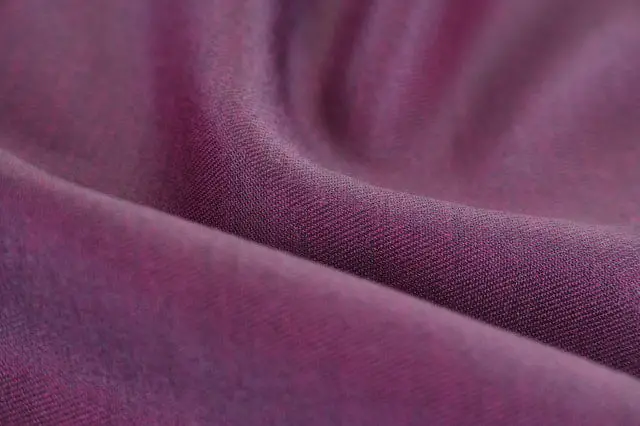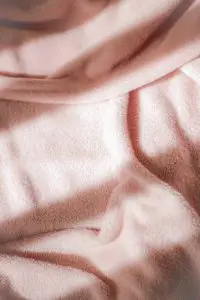Introduction
Elegance and style are the visible attractions of fashionable products; however, durability and toughness determine whether users pick them as favorites. Everyone loves to look sophisticated and stand out, and no one likes to have their outfits easily susceptible to damage, just as nobody wants their wears to be worn out within a short while of purchase. Comparing ancient times and today’s society, the preference and adoption of soft-feel clothes and shoes have become the order of the day. Materials like chiffon, velvet, silk, cotton, polyester, denim, satin, spandex, and suede can be applauded for their soft-feel nature. Although they are all soft and comfortable for use, they have differences. This article aims to analyze velvet vs suede and explain the differences.
- Velvet
- Suede
- Learn The Difference
Velvet
Velvet is an evenly distributed cut threaded material. It is soft and briefly densely piled. Velvet was first used in the eastern regions of Asia in the 13th century AD. It was considered a royal fabric because of its intensive production cost, soft nature, and attractive appearance. The Egyptians were also prominent for their velvet use, and their capital city was widely known for its large velvet production.
Velvet is knitted on a unique loom that knits two fabrics simultaneously. The two materials are further separated with a cut to induce a pile effect. After which, these materials are rolled on different take-up rolls. When velvet was discovered, it was created only from silk. However, due to advancements in its production, it is produced from other sources like synthetic fibers, linen, and wool.
Before the advent of the industrial age, velvet’s complex production procedure was the reason for its high production cost. Although the production costs have lessened, quality velvets are still budget intensive. The fabric’s pily nature is the reason for its high maintenance cost, although there are advanced technologies to handle its cleaning difficulties.
Velvet Types
There are several types of velvet. They differ by weight, appearance, composition, and production process. They include but are not limited to:
- Burnout
- Ciselé
- Kuba velvet
- Nacré
- Panne velvet
- Transparent velvet
- Crushed velvet
- Hammered velvet
- Double velvet
Velvet Varieties
- Silk
- Microfiber
- Cotton
- Viscose
- Nylon-Rayon blend
- Spandex-Polyester
Suede
Suede is a fuzzy leather-like material that has a wide variety of uses. It is created from the under part of animal skin. While lambs are primary suede sources, animals like goats, calves, and deers can also be used. This underside is fluffier and has more flexibility than the tough outer part. Although it is less durable than the outer skin, it is a handy material for clothes and other products that require delicate handling. At inception, suede was meant to serve as raw materials for female gloves. The Swiss artisans in the 1600s were the inventors of suede for producing feminine gloves that felt highly soft to the skin. It was a preferable alternative to the stern and rough leather from the outer animal skins. For many years, suede primarily remained a female glove raw material until the Europeans discovered its alternate uses. Through their discovery, it became a choice material for shoes, purses, cloaks, and others.
Velvet vs Suede – The Differences
Their Origin
While suede and velvet have direct traces to nature, they have varying origins. Suede is an extract from inner animal hide, while velvet is a plant extract designed from natural and manufactured fibers.
Production Process
Considering velvet vs suede, velvet has a more intricate production process compared to suede because of its complex machining operations. Suede is produced by scraping the animal’s hair with lime. The shaved skin begins to tan and gets converted into non-degradable leather. Afterward, the hide is treated with several chemicals to make it solid and durable. At this point, the inner skin is separated, textured, and colored.
However, velvet passes through looming and spinning processes that create double layers simultaneously. They are further separated and twined on rolls.
Gender Suitability
Gender suitability is an outstanding noticeable feature when examining velvet vs suede. Women have been found to look more fashionable in velvet than in suede. Velvet outfits have a charming advantage they give to ladies. Velvet dresses make them look magically beautiful and elegant. They might not get all these attractive qualities when they style suede outfits because suede clothes may instead earn them a friendly and slightly masculine aura.
However, suede outfits on men give them a graceful and dignified look. Suede clothes and shoes portray masculine confidence rather than velvet.
Laundry Compatibility
Suede is preferably hand washed or dry cleaned, rather than machine washed. If a washing machine must be used, a front loader is better because top loaders twist fabrics. Also, the machine has to be set to wash gently with a bit of detergent in cold water. When drying, it is advised first to squeeze the material in a towel until it is damp before spreading it to completely dry.
Velvet, on the other hand, can be hand washed. Although it fades when it is sun-dried, hence, it should be hung in the shade. It is noteworthy that outfits with different velvet compositions have varying cleaning processes. These processes depended on its design fibers.
Texture and Vulnerability
Although suede shoes are better used on formal occasions, they are highly delicate and susceptible. They can absorb a lot of water and are susceptive to stains if not well preserved. When exposed to harsh weather conditions, they may lose their formal qualities and become unusable. They naturally require so much care and constant maintenance.
Velvets are fluffy but can withstand more harshness compared to suedes. Their tolerance for harsh conditions is due to their multiple fiber content. They also require regular and quality care because of their fibrous natural and synthetic origins. Their softness makes them very comfortable to wear, although they are not primarily designed for shoes. Hence, examining velvet vs suede, suede has a tougher texture but is more vulnerable to damages.
Heat Retention
Heat retention is a notable factor when learning the differences between velvet and suede. Velvet has an exceptionally soft feel and is made with fiber. Although fluffy, it is very suitable for cold periods. Its thickness, weight, and high fiber content allow it to get warm quickly. However, celebrities like to style it during summer periods as well.
Suede absorbs moisture significantly but emits heat within a short period. This impressive heat emission is one of the beauties of suede items. With suede outfits, one is sure of sweating less and remaining relaxed.
Synthetic Quality
Speaking of the noticeable features in the velvet vs suede comparison, the quality of their synthetic versions is included. These synthetic versions, termed “ultra velvet” and “ultra suede,” have their places in the fabric industry. Although, generally speaking, ultra velvet in-house materials can be challenging to clean, they can offer a feeling of luxury in the home. Ultra velvet gives a cozy feel, especially when used beside the fireplace in cold weather.
Ultra suede, also known as microfiber suede, has a similar appearance and feel as the original suede. The advantage of ultra suede over ultra velvet is that it is more usable in homes that have kids. It tolerates scratches and tears. Its users can barely be worried about having their ultra suede items destroyed by pets. Unlike ultra velvet, it is not difficult to clean when stained. Although ultra suede does not offer a luxurious feel as ultra velvet does, it is durable and befitting.
Wickability
Velvet is a high moisture-wicking fabric. Although, the level of its wickability depends on its material composition. Among the velvet varieties, the natural versions designed from cotton and silk are highly wickable. Velvets produced from wool are wickable during cold periods. However, they are often hot during warm seasons.
On the other hand, suede is impressively breathable due to its natural porosity. During the summer, people who use suedes often sweat less. During winter, suede materials are durable and preferable due to their body-warming nature. Their breathability is more impressive than regular leather.
Comfort and Usage
Suede and velvet are soft fabrics that offer pleasant feelings on the skin. However, velvet is softer and more comfortable. It provides premium relaxation and a sense of confidence in its strength. Although velvet gets stained easily, it is not difficult to clean. In contrast, suede is fragile and hides stains. Its stain-absorbing ability allows its users to worry less about cleaning it regularly.
In many cases, velvets have a more sophisticated feel compared to suedes.
Use Cases
Suede and velvet have a broad spectrum of uses. Suede is used for suits, hats, fabric lining, belts, car seats, shoes, gloves, etc. It is perfect for furniture.
Velvet, however, can be used for dresses, formal outfits, beddings, evening outfits, curtains, etc. However, it is not suitable for furniture exposed to the sun. Velvet exposed to the sun will fade quickly. This implies that velvet furniture should not be staged in front of large windows or directly under sunlight.
Material Cost
Considering velvet vs suede, an undoubtful fact is their luxurious nature. Naturally, luxury items are gotten at high prices. Velvet and suede are in this cost-intensive category. Although velvet market prices vary, surveys have shown that they often cost $6 to $22 per yard. Silk velvet, considered the most expensive variety of velvet, costs as much as $350 per yard.
Suede also has a variety of prices in the market. From a general point of view, suede is more expensive than velvet. Its market prices range between $9 and $50 per yard.
A Great Online Class: Color Theory for Textile Projects by Domestika
If you are interested in learning more about how you can create a successful name for your business, we recommend taking a look at the online class “Color Theory for Textile Projects”.
The course is currently under promotion, but you can use the discount code: T_BROWNLEES-PROMO to get an additional 10% discount on your purchase.
This online class offered by Domestika, at a very inexpensive price covers all you need to know to develop your textile project by leveraging color theory to create the perfect color palette. If you apply to the course through the link below you’ll be supporting 440 Industries, and we thank you for it!
Conclusion
Velvet and suede are luxury materials that are highly sourced. They have distinct origins, production processes, varieties, and quality levels. Suedes are tough but delicate, while velvets are soft but more tolerant. While their prominent features are for clear understanding and comparison, users can freely select their choice fabrics based on preference and need







